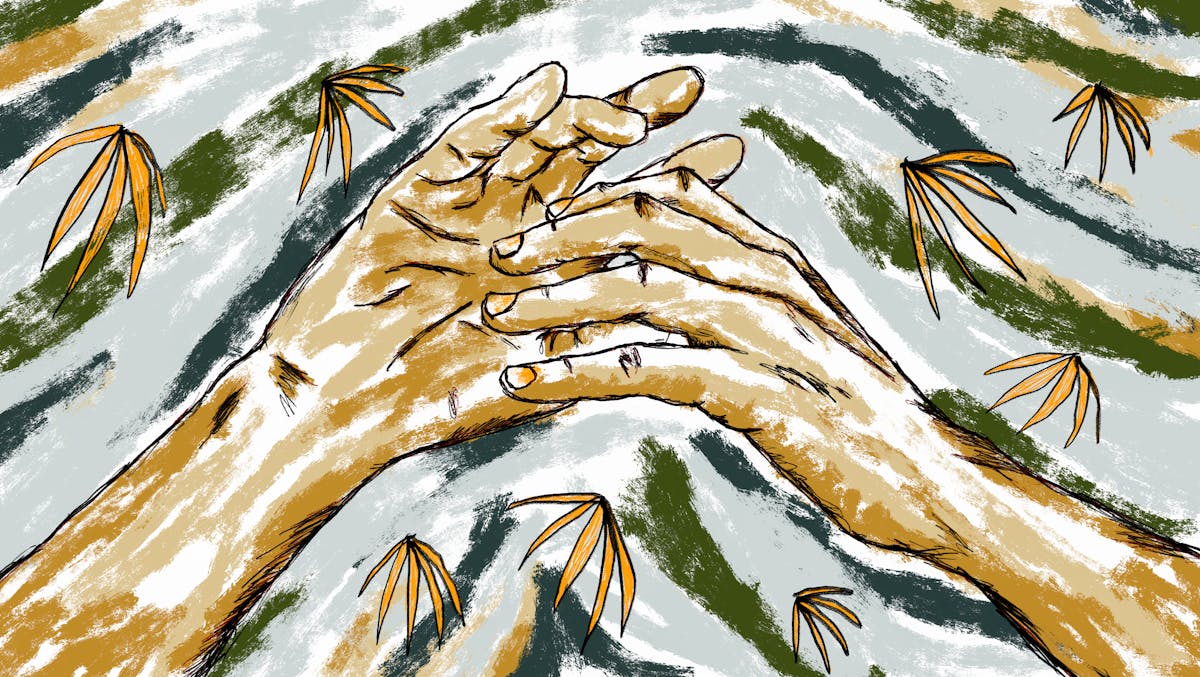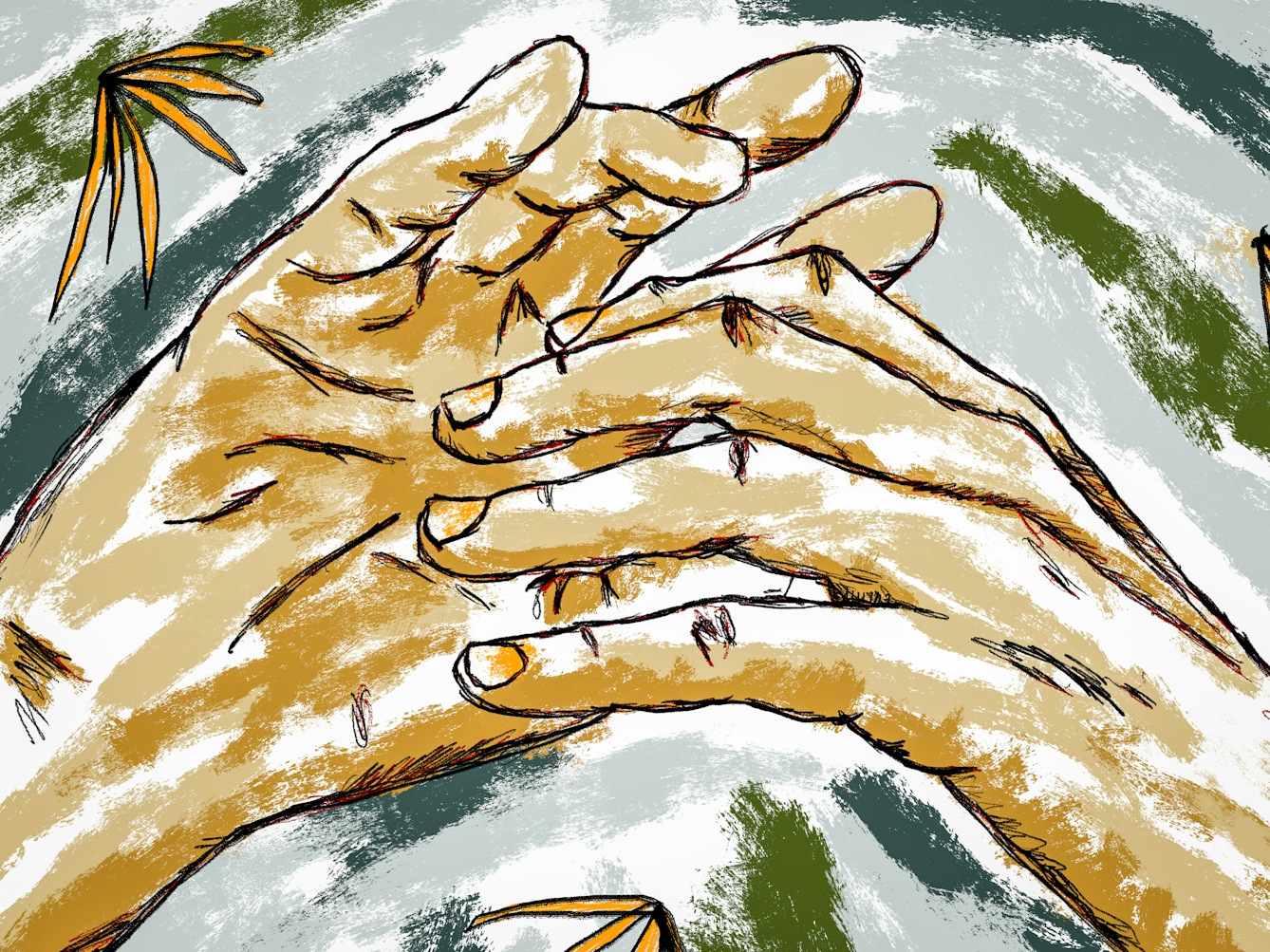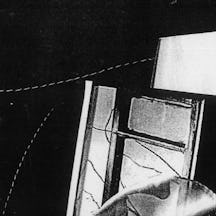Fat and skint, LMM believed that her body shape and her bank balance were completely connected. If only she was thinner, she’d be richer too. It took time and conversations with friends to realise that fatphobia was an oppression she had to resist. Here she explores the many elements of survival that come with occupying a working-class, fat body.
Surviving fatness
Words by LMMartwork by Nan Carreiraaverage reading time 5 minutes
- Article

I have been fatter than I am now, and I have been poorer than I am now; however, it has taken me a long time to realise that the two do not correlate.
Until I reached my 30s, I firmly believed that if I was thin, I would be successful, and if I wasn’t successful, I would at least be rich. I don't know where I thought this thin person’s money would come from. I just knew there was a direct relationship between straight-sized people and well-off people and that seemed good enough for me.
What I did know for certain is that I worked four jobs and I was fat and I was skint. Therefore, I didn't have money because I was fat.
Coming from a place where money and lack of it causes threat and exclusion perpetuated a mindset in me that, by the very nature of existing in this body I hadn't done anything out of the ordinary to create, I was putting myself at risk. I was harming myself. Not through having to endure endless triggering health warnings, or by being part of the UK’s so-called obesity epidemic, but because people don’t want to pay fat people; they don’t want fat people in their workplaces. This is difficult because, as with everyone else, fat people need money to live.
I had the privilege to attend art school in the late 2000s, an era when speaking about marginalisation was still something that was kept to the pub. Being able to access university was a massive success for me, and I took advantage of government funding and scholarships to get there. I felt like there was real power in this education and I felt so lucky to access it. However, my experience within these institutions only reinforced the perceived lack in the way I looked and the amount of money I had.
Back then, class wasn’t a topic for discussion at art school. There was, however, a trend for class tourism – secret rich kids would turn up in box-fresh tracksuits, smoke roll-ups, and talk with a weird accent that they maybe assumed was Northern.
My way of life had to be muted. But when my lived experience was performed by people with more money than me, it was a trend to aspire to.
These students’ time seemed limitless; they never seemed to have to go to work. Some of them would excel at things like video work or Photoshop, even though their ideas were perhaps less developed. It took me a long time to realise that these people had financial backing that I didn’t and could simply afford a computer, and by affording a computer could learn creative software, which they could then use to get a higher-paid job much more easily when we graduated.

“I navigate a gauntlet of relentless fatphobia, but also I have to prove to the world that my body can survive, even though it is fat. By surviving, I am demonstrating I will not be a burden.”
It was also around this time that social media began to take a central hold in our lives. It became clear that people were not posting pictures of the fat or less-connected (poor) people they knew.
I am still haunted by the images of me that were not posted on social media, and the ones where I was edited out. This happened especially at corporate or gallery events. Sometimes the crops were lazy and you’d see my arm just in shot, or my back would be turned – the photo taken at the moment when I’d moved on to talk to someone else. Being fat is bad PR unless you are funny – but generally, people cannot tell if you are funny from a photograph.
I am still haunted by the images of me that were not posted on social media, and the ones where I was edited out.
It feels hard to think back on these evenings full of joy with friends and somehow think my joy in these moments was a lesser joy; that my joy was invisible.
However, through meeting some of my closest friends (other survivalists) back then, the people who felt safe enough to share with me their experiences of moving through the world with prejudice forced upon them. I learned more about the racist origins of fatphobia and how by fearing my body and allowing others to fear it, I was only reinforcing that oppression.
What I have to prove to the world
There are many elements of survival that come with occupying a working-class, fat body. I navigate a gauntlet of relentless fatphobia, but also I have to prove to the world that my body can survive, even though it is fat. By surviving, I am demonstrating I will not be a burden.
In this sense I survive for me and for those that are not me, those who see me in the street and presume I will make mistakes, or take up benefits, resources and healthcare. I survive for these strangers every time I walk out of my front door.
I am not fat because I have been poor (and by some scales of measurement I still am). I am fat simply because my body is bigger in some ways than others’. Being fat and poor are mutually exclusive, but you survive them in similar ways – by leaning in to the stereotype, by being so much of the perceived thing that you make no room for it to be turned against you.
I survive it by being unmistakably visible in these spaces – the galleries, the shops, the restaurants – not ‘for’ us, or by being honest about the reasons we are unable to attend, because finance is a barrier that has to be vocalised without shame. If we don’t do this, then how will others in the same position know they can be there too?
Crucially, I believe that success is not linked to transcending class but is about seeing and appreciating the value in each other and ensuring all our joys, both fat and poor, are represented in a full, unedited picture.
About the contributors
Nan Carreira
Nan Carreira is a non-binary artist working primarily with painting, drawing and participative art, with a special focus on queerness. Nan’s work can be seen as a call to imagine new worlds where traits like vulnerability and self-expression are celebrated instead of being punished and repressed.

